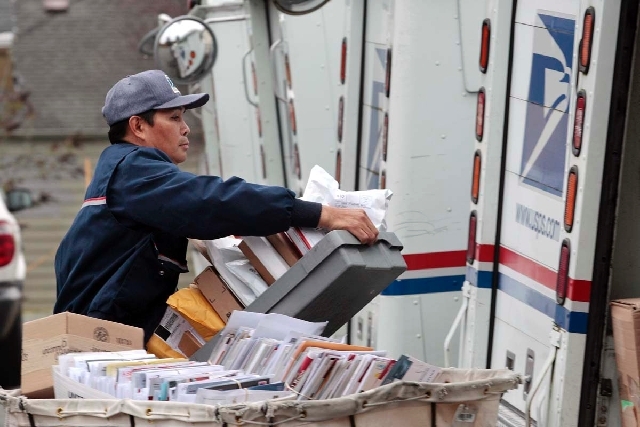Front-door mailbox delivery may get budget axe
WASHINGTON — Americans for generations have come to depend on door-to-door mail delivery. It’s about as American as apple pie.
But with the Postal Service facing billions of dollars in annual losses, the long-cherished delivery service could be virtually phased-out by 2022 under a proposal a House panel was considering Wednesday. Curbside delivery, which includes deliveries to mailboxes at the end of driveways, and cluster box delivery would replace letter carriers slipping mail into front-door boxes.
The proposal is part of a broader legislation by House Oversight and Government Reform Committee Darrell Issa, R-Calif., designed to cut costs at the cash-strapped agency by up to $4.5 billion a year. The Postal Service had a $16 billion loss last year.
The agency has been moving toward curbside and cluster box delivery, which is less expensive to provide than door-to-door service, in new residential developments since the 1970s. The Postal Service in April began deciding whether to provide curbside or neighborhood cluster box delivery for people moving into newly built homes, rather than letting the developers decide.
“A balanced approach to saving the Postal Service means allowing USPS to adapt to America’s changing use of mail,” Issa said. “Done right, these reforms can improve the customer experience through a more efficient Postal Service.”
About one in three mail customers has door-to-door delivery, Issa said. The shift would help provide safe and secure delivery areas, Issa said, especially for elderly customers who receive things like Social Security checks and prescriptions through the mail.
Rep. Steve Lynch, D-Mass., said the plan to move some 30 million addresses from door-to-door to curbside and cluster box service would be virtually impossible in dense urban areas such as his hometown of South Boston crowded with triple-deckers — three apartments stacked on top of each other.
“You’d have to knock houses down in my neighborhood to build cluster boxes,” Lynch said. “This will not work.”
It might work in places like Manhattan with big apartment buildings, he said.
The financially beleaguered U.S. Postal Service, an independent agency, gets no tax dollars for its day-to-day operations, but is subject to congressional control.
The Postal Service is pursuing a major restructuring throughout its retail, delivery and mail processing operations. Since 2006, it has reduced annual costs by approximately $15 billion, cut its workforce by 193,000 or 28 percent, and consolidated more than 200 mail-processing locations.
The service’s losses are largely due to a decline in mail volume and a congressional requirement that it make advance payments to cover expected health care costs for future retirees. About $11.1 billion of last year’s losses were due to payments for future retiree health costs.
The Postal Service is considering several options to fix its finances, including negotiations with unions to reduce labor costs and another possible increase in prices.
The service earlier this year backpedaled on its plan to end Saturday mail delivery after running into opposition in Congress. It has tried repeatedly and unsuccessfully over the past several years to have Congress approve ending Saturday mail delivery and to free it from the advance health payments.
Postal officials have said that to restore the service to long-term financial stability, the agency needs more flexibility to reduce costs and come up with new revenues.
The Senate last year passed a bill that would have stopped the Postal Service from eliminating Saturday service for at least two years and required it to try two years of aggressive cost cutting instead. The House didn’t pass a bill.






















